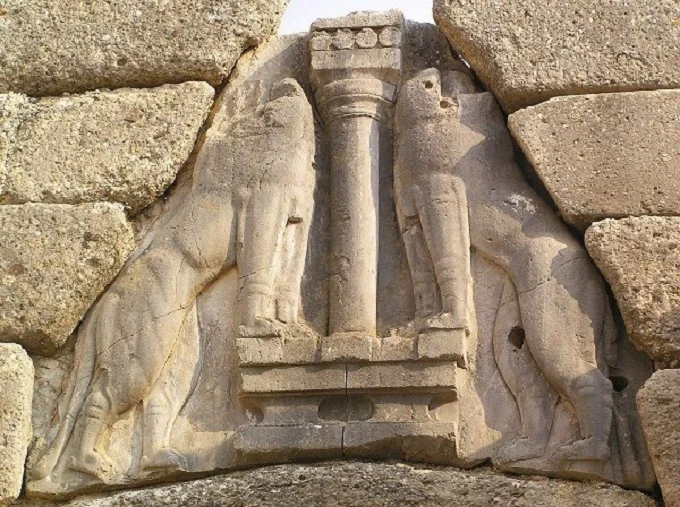Greek cities were usually located on hills, hence the name “acropolis,” which means “upper city”. The cities were surrounded by a strong fortress wall. Mycenae was protected by a 900-meter wall with a thickness of 6-10 meters. The wall is made of rough monoliths weighing about 5 tons, which are held exclusively by their weight – the so-called cyclopean masonry.
The main entrance, the Mycenaean Lion Gate, amazed everyone who saw it and made them believe in the indestructibility of the state. By modern standards, the gates were made simply – four stacked monoliths of limestone are decorated with a relief depicting lionesses and columns.
The construction of the gates in Mycenae is attributed to the 8th century BC. This construction of portal type is characteristic of this period. Two stone blocks hold up a beam. Everything above the beam is angled to transfer the load to the side walls. This creates an empty space in the form of a triangle, which is here filled by the lion’s plate.
The relief pattern is also similar to the Cretan culture. The lionesses rest their paws on the foot of the altar, on which the column with the capitulum valve is placed. Similar columns can be found in the Palace of Knossos. The very meaning of the bas-relief is unknown. It may be a symbol of deity, home, or the power of kings.
There is a version that is simply the coat of arms of the dynasty that ruled at the time of the construction. This mystery makes this Lion’s Gate in Greece an even more significant monument of antiquity.
